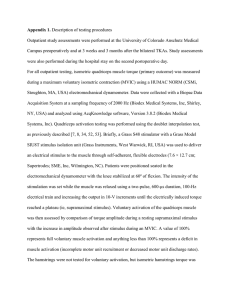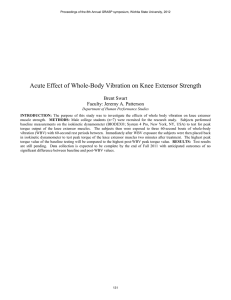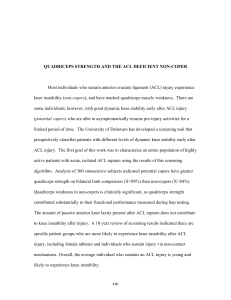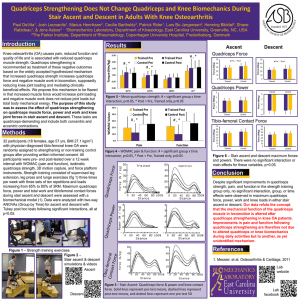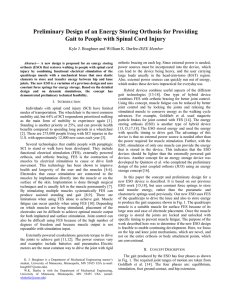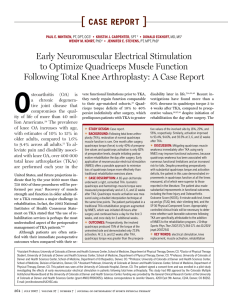October 21, 2005 Katy Rudolph, PT, PhD (Host PT) CCM 106
advertisement
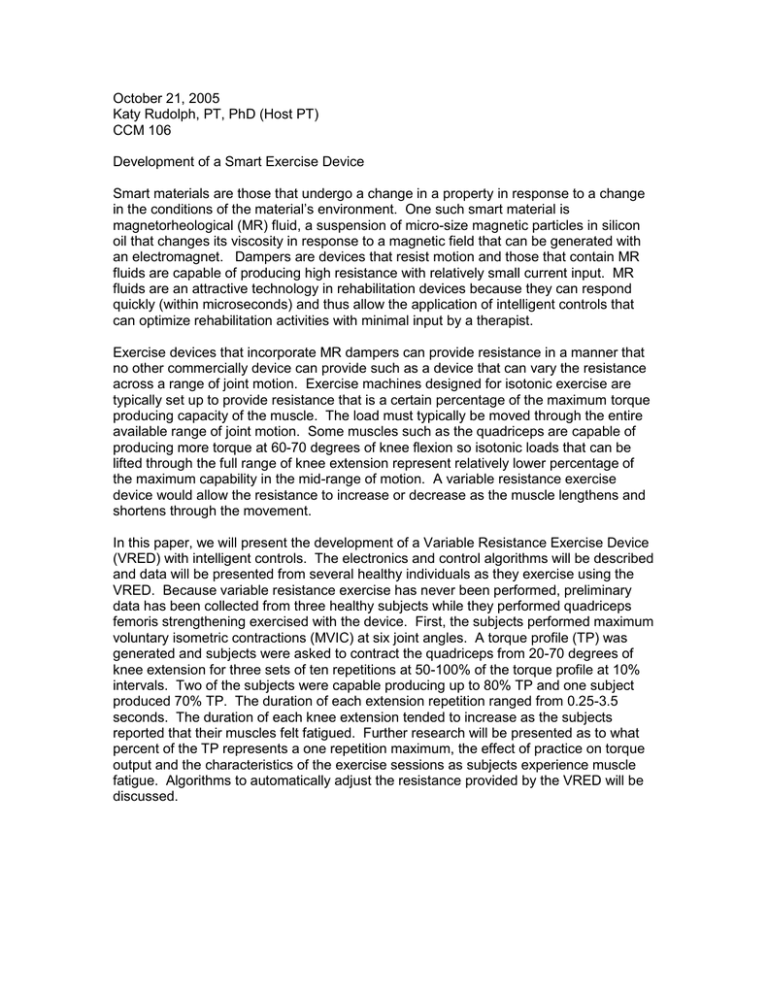
October 21, 2005 Katy Rudolph, PT, PhD (Host PT) CCM 106 Development of a Smart Exercise Device Smart materials are those that undergo a change in a property in response to a change in the conditions of the material’s environment. One such smart material is magnetorheological (MR) fluid, a suspension of micro-size magnetic particles in silicon oil that changes its viscosity in response to a magnetic field that can be generated with an electromagnet. Dampers are devices that resist motion and those that contain MR fluids are capable of producing high resistance with relatively small current input. MR fluids are an attractive technology in rehabilitation devices because they can respond quickly (within microseconds) and thus allow the application of intelligent controls that can optimize rehabilitation activities with minimal input by a therapist. Exercise devices that incorporate MR dampers can provide resistance in a manner that no other commercially device can provide such as a device that can vary the resistance across a range of joint motion. Exercise machines designed for isotonic exercise are typically set up to provide resistance that is a certain percentage of the maximum torque producing capacity of the muscle. The load must typically be moved through the entire available range of joint motion. Some muscles such as the quadriceps are capable of producing more torque at 60-70 degrees of knee flexion so isotonic loads that can be lifted through the full range of knee extension represent relatively lower percentage of the maximum capability in the mid-range of motion. A variable resistance exercise device would allow the resistance to increase or decrease as the muscle lengthens and shortens through the movement. In this paper, we will present the development of a Variable Resistance Exercise Device (VRED) with intelligent controls. The electronics and control algorithms will be described and data will be presented from several healthy individuals as they exercise using the VRED. Because variable resistance exercise has never been performed, preliminary data has been collected from three healthy subjects while they performed quadriceps femoris strengthening exercised with the device. First, the subjects performed maximum voluntary isometric contractions (MVIC) at six joint angles. A torque profile (TP) was generated and subjects were asked to contract the quadriceps from 20-70 degrees of knee extension for three sets of ten repetitions at 50-100% of the torque profile at 10% intervals. Two of the subjects were capable producing up to 80% TP and one subject produced 70% TP. The duration of each extension repetition ranged from 0.25-3.5 seconds. The duration of each knee extension tended to increase as the subjects reported that their muscles felt fatigued. Further research will be presented as to what percent of the TP represents a one repetition maximum, the effect of practice on torque output and the characteristics of the exercise sessions as subjects experience muscle fatigue. Algorithms to automatically adjust the resistance provided by the VRED will be discussed.
